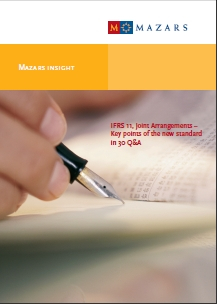IFRS 11, Joint Arrangements – Key points of the new standard in 30 Q&A
One of the main criticisms of ED 9, the elimination of the proportionate consolidation method when accounting for joint ventures - which had been the preferred method in IAS 31 - was ultimately rejected by the international standard setter.
The main novelty introduced by IFRS 11 consists in the distinction betweenjoint operations and joint ventures. This distinction is based on an analysis ofthe rights and obligations of the parties that exercise joint control over the jointarrangement. The accounting treatment presented in IFRS 11 differs, dependingon whether the joint arrangement is a joint operation or a joint venture, with nooptional accounting treatment for a given type of joint arrangement.


